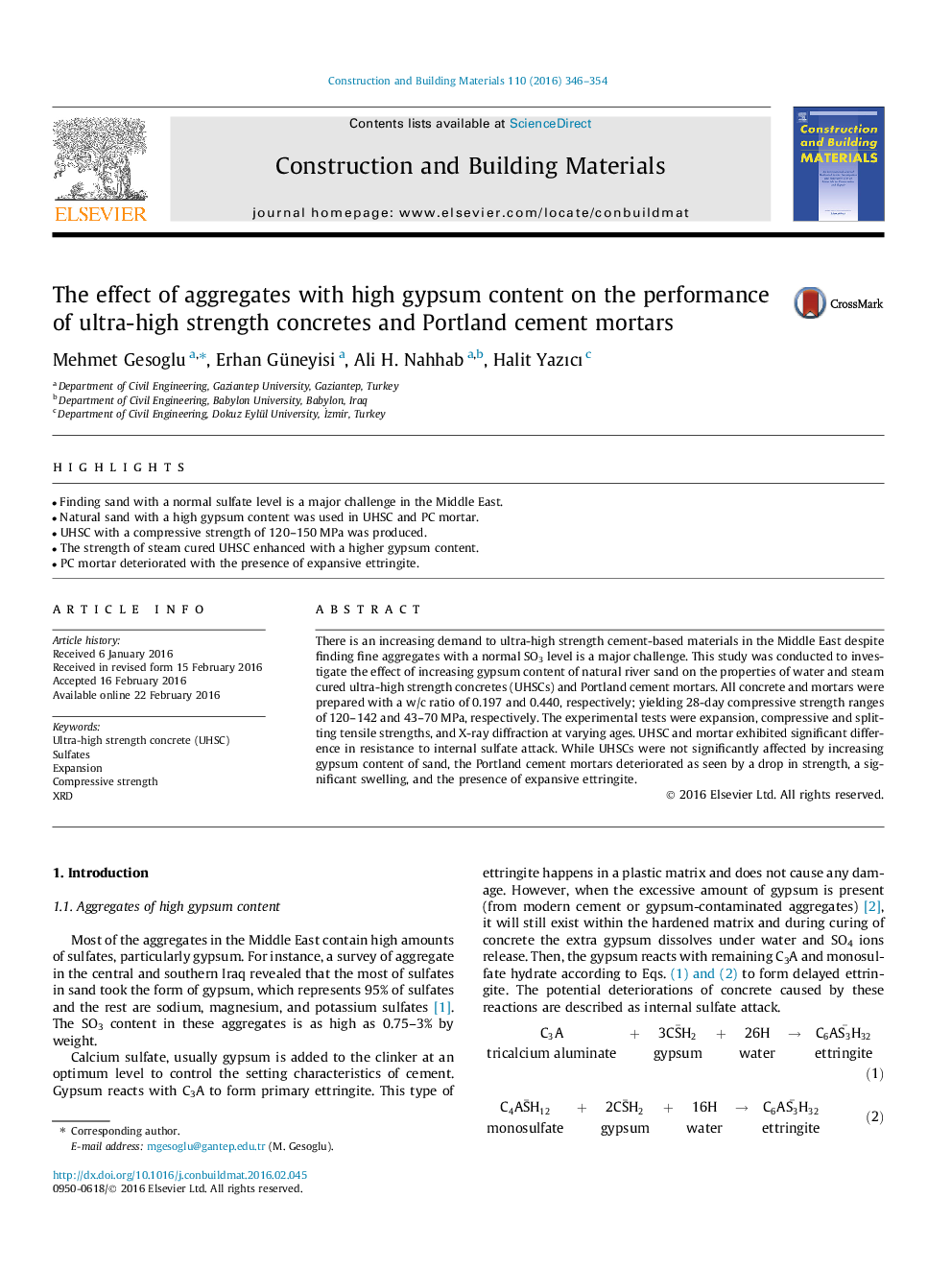| Article ID | Journal | Published Year | Pages | File Type |
|---|---|---|---|---|
| 256091 | Construction and Building Materials | 2016 | 9 Pages |
•Finding sand with a normal sulfate level is a major challenge in the Middle East.•Natural sand with a high gypsum content was used in UHSC and PC mortar.•UHSC with a compressive strength of 120–150 MPa was produced.•The strength of steam cured UHSC enhanced with a higher gypsum content.•PC mortar deteriorated with the presence of expansive ettringite.
There is an increasing demand to ultra-high strength cement-based materials in the Middle East despite finding fine aggregates with a normal SO3 level is a major challenge. This study was conducted to investigate the effect of increasing gypsum content of natural river sand on the properties of water and steam cured ultra-high strength concretes (UHSCs) and Portland cement mortars. All concrete and mortars were prepared with a w/c ratio of 0.197 and 0.440, respectively; yielding 28-day compressive strength ranges of 120–142 and 43–70 MPa, respectively. The experimental tests were expansion, compressive and splitting tensile strengths, and X-ray diffraction at varying ages. UHSC and mortar exhibited significant difference in resistance to internal sulfate attack. While UHSCs were not significantly affected by increasing gypsum content of sand, the Portland cement mortars deteriorated as seen by a drop in strength, a significant swelling, and the presence of expansive ettringite.
